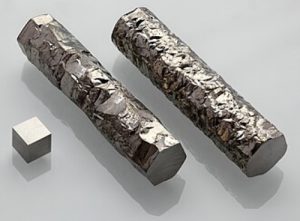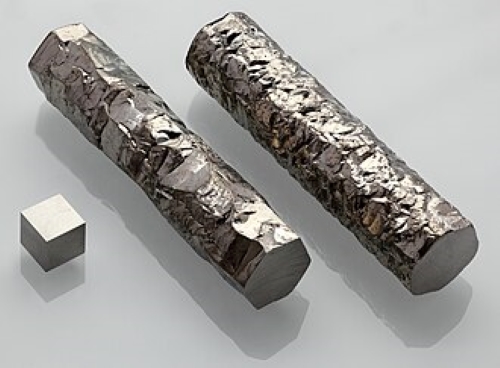Introduction
Zirconium is a metal that finds use in a variety of high-tech and industrial applications due to its unique properties. The cost of zirconium can be attributed to several factors, including its extraction, processing, and demand in specialized industries. Here are the primary reasons why zirconium is expensive:

1. Extraction and Processing Costs
a. Mining and Refining:
Zirconium is primarily obtained from the mineral zircon (ZrSiO4). Extracting zirconium from zircon involves complex and energy-intensive processes. Zircon is typically mined from mineral sands, and the extraction process involves separating zircon from other heavy minerals, which requires substantial effort and technology. For example, in 2021, the global production of zirconium mineral concentrates was estimated at around 1.3 million metric tons, primarily sourced from Australia and South Africa.
b. Purification:
Purifying zirconium to achieve the necessary level of purity for industrial use is a complex process. Impurities such as hafnium, which often occurs alongside zirconium, need to be separated. This separation process is intricate and costly because hafnium has similar chemical properties to zirconium. The Kroll process, commonly used to purify zirconium, involves reducing zirconium tetrachloride (ZrCl4) with magnesium, which is both energy-intensive and costly.
Related reading: 6 Uses of Zirconium You Mightn’t Know
2. High Demand in Specialized Applications
a. Nuclear Industry:
Zirconium is highly valued in the nuclear industry due to its low absorption cross-section for thermal neutrons, which makes it ideal for cladding nuclear fuel rods. The stringent quality and purity requirements for zirconium used in nuclear reactors drive up its cost. The global market for nuclear-grade zirconium was valued at approximately $300 million in 2022, reflecting its critical role in nuclear energy production.
b. Aerospace and Military:
In aerospace and military applications, zirconium alloys are prized for their high strength, corrosion resistance, and ability to withstand extreme temperatures. For instance, zirconium alloys are used in jet engines and missile components, where performance under high-stress conditions is essential. The aerospace sector alone accounted for about 15% of the global zirconium market in 2022.
c. Chemical Processing:
Zirconium is used in chemical processing equipment due to its resistance to corrosion by acids, alkalis, and seawater. This specialized use in harsh environments adds to the demand and cost of high-purity zirconium. The chemical industry’s demand for zirconium is expected to grow at a CAGR of 4.5% from 2023 to 2030, highlighting its importance in this sector.
3. Limited Supply and Geopolitical Factors
a. Geographical Distribution:
Zirconium resources are geographically concentrated, with significant deposits found in Australia, South Africa, and the United States. Limited supply from these regions can lead to supply constraints, impacting prices. For example, Australia alone accounted for over 40% of the world’s zircon production in 2021.
b. Geopolitical Risks:
The mining and export of zirconium can be affected by geopolitical factors, including trade policies, tariffs, and political instability in zirconium-producing regions. These risks can contribute to price volatility and higher costs. In 2020, trade tensions between major zirconium producers and consumers led to a temporary spike in prices.
4. Technological and Production Challenges
a. Advanced Manufacturing:
Producing high-purity zirconium and zirconium alloys requires advanced manufacturing technologies and stringent quality control measures. The investment in technology and adherence to high standards add to production costs.
b. Research and Development:
Continuous research and development to improve zirconium extraction, processing, and applications incur significant costs. These costs are often passed on to consumers, contributing to the overall expense of zirconium products. The global R&D expenditure on zirconium-related technologies was estimated at $50 million in 2022.
5. Environmental and Regulatory Compliance
a. Environmental Regulations:
Mining and processing zirconium must comply with stringent environmental regulations to minimize the impact on the environment. Adhering to these regulations requires investment in sustainable practices and technologies, which adds to the cost.
b. Health and Safety:
Ensuring the health and safety of workers involved in the mining and processing of zirconium is crucial. Implementing safety measures and protocols incurs additional costs, contributing to the overall expense of zirconium. Companies in the zirconium industry often follow strict health and safety standards, further driving up production costs.
Conclusion
The high cost of zirconium can be attributed to its complex extraction and purification processes, high demand in specialized and critical applications, limited supply, geopolitical factors, technological challenges, and stringent environmental and safety regulations. These factors collectively make zirconium an expensive but essential material in various high-tech and industrial sectors. Understanding these dynamics helps appreciate the value and significance of zirconium in modern technology and industry. For more information, please check Advanced Refractory Metals (ARM).
